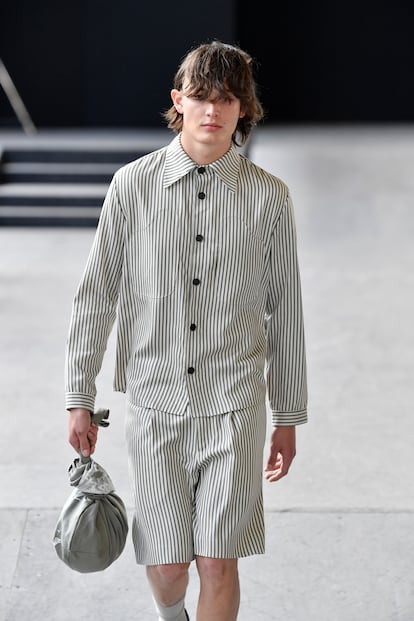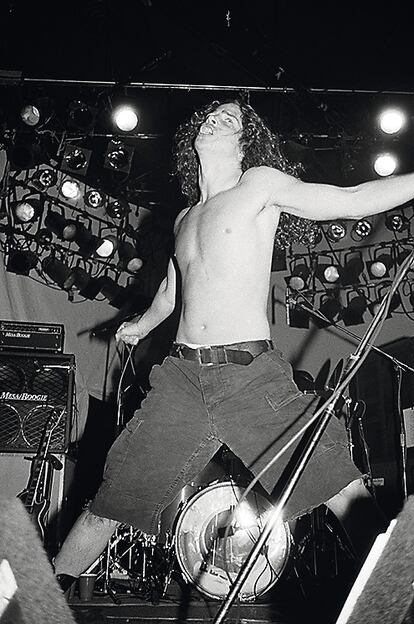Fashion is a world full of unwritten rules, but some have been recorded on paper. in his book ABC of Men’s Fashion, the British designer Hardy Amies – who was official dressmaker to Queen Elizabeth II and one of the leading representatives of the Savile Row sartorial style – issued a ruling: “A man should never wear shorts, except when he is on the beach. or during a walk.” Thus, a belief that arose long before and that still persists was put in black on white: shorts are not acceptable in men’s style beyond some rare and sweaty occasions. “The natural desire for relaxation is often the origin of the abandonment of style standards,” Amies wrote in the same book. In other words, wearing them outside of some very specific moments is equivalent to being considered a neglected person lacking the slightest sense of elegance.
But fashion, on the other hand, is also a world where no rule is safe from being torn to pieces. In recent times we have seen how some men have dared to show their legs in situations that would have provoked a look of disapproval from Amies or Tom Ford, who in 2011 stated in an interview that shorts were only acceptable “on the track.” tennis or on the beach. Pedro Pascal did it at last year’s Met Gala, dressed in Valentino red, or Jacob Elordi at this year’s Milan fashion week, in black and combined with a leather jacket, also the work of Pierpaolo Piccioli. Pharrell Williams, who had already used them in a tailored version, has included them in different shapes and lengths in his most recent collection for Louis Vuitton, and an urban fashion icon like A $ AP Rocky is an expert in combining them with blazer and shoes with high socks. Not to mention the elevation of shorts sports and the vindication of the masculine leg that Paul Mescal achieves every time he goes out into the street. The question, therefore, is pertinent: has the veto on shorts finally been lifted?
To understand why shorts are associated with bad taste, you have to delve into a mixture of puritanism, class clashes and coincidence. Until the French Revolution, the masculine garment of the upper classes was the underwear, which was completed with stockings, while the use of long pants was limited to the lower classes, which gave rise to the term sans-culotte. From then on, with the rise of the bourgeoisie, ankle-length pants were installed as the default garment except in a few cases. The British military in the colonies adopted beige cotton Bermuda shorts as part of their uniform to resist high temperatures and humidity. The other area in which shorts were accepted was another uniform, this time the school uniform. Once again, the British influence was crucial in identifying this garment as a childhood staple, through private schools that adopted it as part of their clothing. Wearing your knees in the air, regardless of the time of year, was reserved for children, exempt from adult rules of decorum, turning the moment of adding cloth to the legs into a rite of passage to maturity. Unlike the underwear, the association of shorts and childhood survives to this day. It makes sense, therefore, for their capacity to protest: the uniform of many rock bands, inherited from typically adolescent sports such as skate, goes through sagging and cut pants. and the groups heavies of the eighties had in common with the gay community the use of shorts shortest and tightest on the market.
Carlota Barrera, one of the few women men’s fashion designers in Spain, goes a little further in her analysis: “On the one hand, the shorts return us a little to the school uniform, but I think that is also combined with that “part of traditional masculinity of not showing skin, something that is more related to women.” Barrier designs shorts in different versions, from “very short designs, very established in the seventies and more associated with the feminine world, to others in wool at knee height to make a tailoring game.” Another designer who has advocated the use of shorts in his collections is Archie Alled-Martínez. “I started using the sportier version as an icon of the community queer, and I liked that it was a statement, that is, that it was as short as it should be. My clothing manufacturer, in fact, calls them panties”he laughs. His perspective on shorts and their use is free of prejudice: “I think we have to celebrate diversity, not only of bodies, but also when it comes to not talking so much about the decisions of others.”



Fashion breaks stereotypes and film and music stars dare to wear shorts in traditionally forbidden contexts, but what happens in the real world? Wearing your knees in the air at work or a social event can still result in, respectively, a call from human resources or being the subject of ridicule. That topic, however, is changing little by little. “I believe that it is changing, because the people who cause changes in all areas are creat
ive people,” says Carlota Barrera. Alled-Martínez dares to dream: “As car use is now decreasing and bicycle use is increasing, perhaps people will start to ride shorts to work”. For now, he advises us on a less risky way to dress it: “I would take the typical formal pants that make your ass look good and I would snip it, but literally. Also, he looks frayed. That way you can do it to the length you like, period.” Barrera opts for playing by mixing it with more formal elements. “I think it’s fun to combine it with something very dressed up and elevated, that seems like it has no place in that context. With a tailored jacket, a tailored shirt, or maybe even a tuxedo shirt. That and some elegant shoes. Carry the rest of the look to something very dressed up makes that traditionally more casual garment rise and function.”
The sky is the limit. But if you still can’t or don’t dare, don’t worry: we will always have vacations.
You can follow ICON on Facebook, x, Instagramor subscribe here to the Newsletter.
#man #wear #shorts #time #show #legs